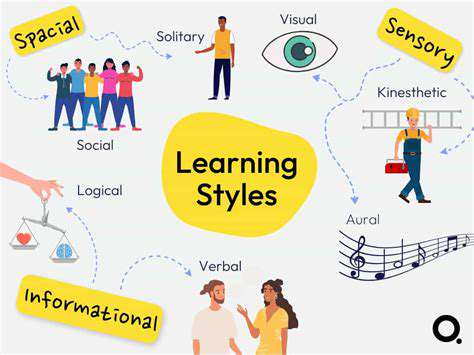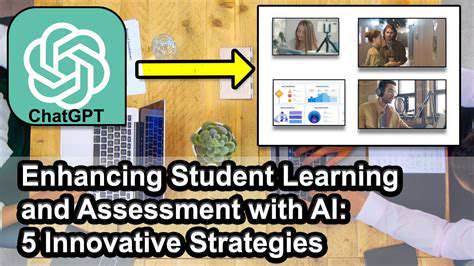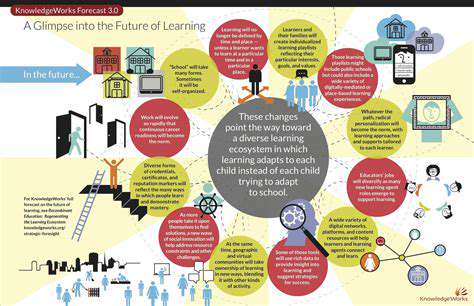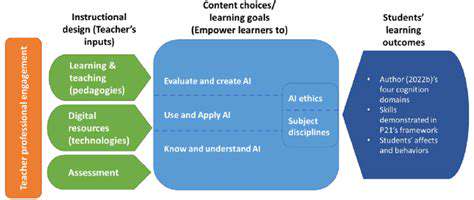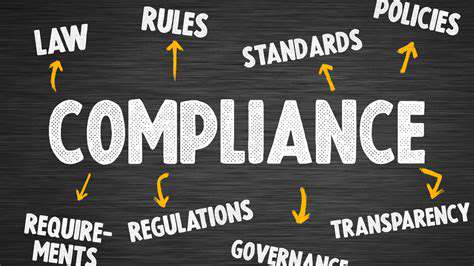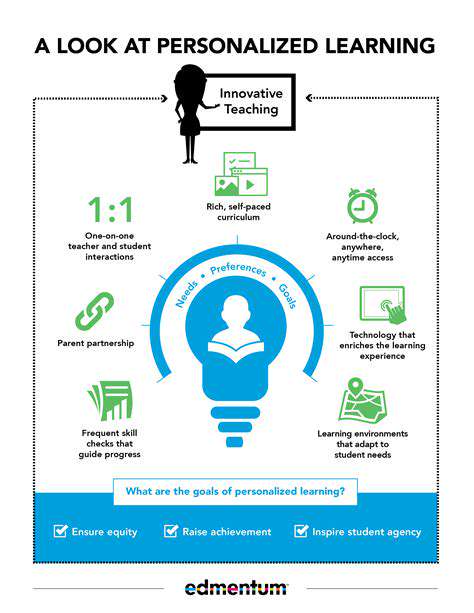Ethical Guidelines for Virtual Reality in Education
Defining Ethical Frameworks for VR in Education
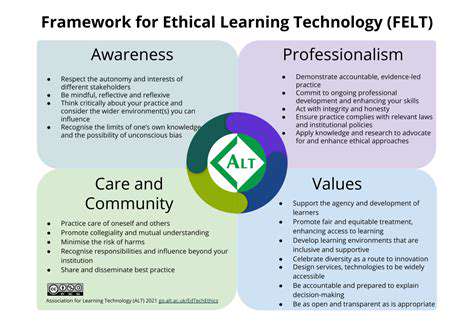
Understanding the Core Principles of Ethical Frameworks
When we consider virtual reality (VR) in educational settings, ethical frameworks become essential tools for addressing the complex moral challenges this technology presents. These structured approaches help evaluate the ethical dimensions of VR applications, guiding responsible innovation and implementation. Well-defined ethical guidelines enable us to harness VR's advantages while minimizing possible negative consequences.
These frameworks typically build upon established ethical theories, modifying them to suit VR's distinctive characteristics. Such adaptation proves necessary because VR creates novel opportunities for interaction and experience that conventional ethical models might not adequately address.
Transparency and Informed Consent
Clear communication about VR experiences forms the foundation for obtaining genuine informed consent. Developers should thoroughly explain what users can expect, including possible risks, benefits, and limitations. This encompasses transparent disclosure regarding data collection practices and usage policies.
Users deserve comprehensive information to make educated decisions about VR participation. They should understand how these experiences might affect them physically, emotionally, and psychologically.
Privacy and Data Security
The extensive data collection inherent in VR applications raises important privacy issues. Implementing rigorous data protection measures becomes crucial to safeguard user information against unauthorized access or misuse. Advanced encryption methods and secure data management protocols serve as vital safeguards in virtual environments.
Developers must strictly follow privacy regulations and honor the boundaries established in user consent agreements.
Accessibility and Inclusivity
VR experiences should accommodate diverse users, considering varying physical abilities, disabilities, and cultural perspectives. Thoughtful design addressing sensory sensitivities, mobility limitations, and cultural context helps create genuinely inclusive virtual spaces.
Responsibility and Accountability
Assigning responsibility for VR-related outcomes presents complex challenges. Clear guidelines must determine accountability for social, psychological, or physical consequences arising from virtual interactions.
The entire VR ecosystem - from developers to users to regulators - should operate according to principles of responsibility. All stakeholders share in the obligation to ensure VR's ethical and responsible application.
Impact on Human Relationships and Society
Virtual reality holds transformative potential for human connections and social organization. Ethical considerations must examine how VR might reshape social dynamics, facilitate new forms of community, or create novel social structures.
We must carefully evaluate how virtual experiences influence both online and offline interpersonal relationships.
Mitigating Potential Harms
VR's immersive qualities introduce unique psychological and physical health considerations. Developers should remain vigilant about risks like addiction, disorientation, or other adverse effects. Thoughtful design practices and continuous user feedback prove essential for reducing potential negative impacts of extended VR use.
Ethical safeguards must protect users from possible exploitation or manipulation in virtual spaces.
Addressing Privacy and Data Security Concerns
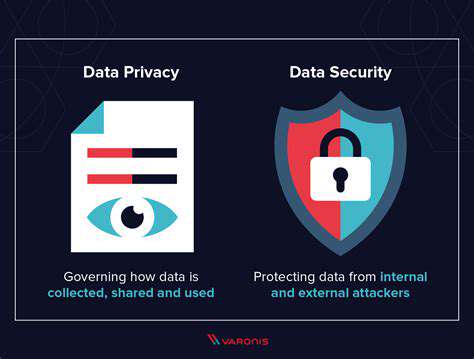
Understanding the Importance of Privacy
Safeguarding personal information represents a critical priority in our digital era. Data breaches and unauthorized access can produce severe consequences affecting individuals and organizations. Given the sensitive nature of personal data, implementing strong protective measures against potential threats becomes essential for maintaining privacy and trust.
Moreover, robust privacy practices align not only with ethical standards but also with legal requirements in many regions. Compliance with data protection laws helps avoid penalties while preserving institutional reputation.
Data Security Best Practices
Effective security protocols form the backbone of sensitive data protection. This includes employing advanced encryption for data in transit and storage. Regular security evaluations and vulnerability assessments help identify and address potential weaknesses. Additionally, implementing role-based access controls and authentication systems helps restrict data access appropriately.
Comprehensive staff training on security protocols can dramatically reduce human error risks. Keeping security systems updated remains crucial for defending against evolving threats.
The Role of Encryption in Data Protection
Encryption serves as a fundamental safeguard for sensitive information. By transforming data into an unreadable format, it prevents unauthorized comprehension or access. This protection proves particularly valuable for server-stored data, network transmissions, and third-party vendor systems.
Various encryption methods exist, each with distinct advantages. Selecting appropriate encryption depends on the specific security requirements and data sensitivity.
Implementing Access Controls and Authentication
Role-based data access restrictions constitute a critical security component. Multi-factor authentication significantly strengthens protection against unauthorized access, creating layered security that challenges potential intruders.
Regular review and adjustment of access permissions help maintain security as organizational needs evolve.
The Significance of Data Loss Prevention (DLP)
DLP strategies play a vital role in preventing sensitive information from leaving authorized control. These approaches monitor data movement while enforcing policies against unauthorized sharing. Effective DLP solutions help protect confidential information and prevent potential security incidents.
Customizable DLP systems allow organizations to tailor protection to their specific data types and business requirements.
Addressing Insider Threats
Insider threats present significant data security risks, whether intentional or accidental. Comprehensive training and awareness programs about security policies help mitigate these risks.
Establishing clear security protocols combined with thorough monitoring and auditing helps deter insider threats. Background checks and periodic access reviews provide additional protective layers.
The Importance of Regular Security Audits and Updates
Consistent security audits and vulnerability assessments help identify system weaknesses before exploitation. These proactive measures represent essential components of comprehensive data protection. Regular software updates ensure defense against newly emerging threats and vulnerabilities.
Security system maintenance requires continuous attention to maintain strong protective measures.
Ensuring Student Well-being and Avoiding Potential Risks
Promoting a Supportive Learning Environment
Establishing safe, inclusive learning spaces remains fundamental to student welfare. This involves cultivating mutual respect, empathy, and understanding throughout the educational community. Open communication channels, behavioral expectations, and accessible support resources all contribute to this nurturing atmosphere. Proactive problem-solving and readily available counseling services help educational institutions minimize potential negative impacts on student well-being.
Addressing issues like bullying, harassment, or discrimination requires prompt, decisive action. Implementing clear anti-bullying policies, confidential reporting options, and staff training helps prevent escalation of such behaviors. Classroom discussions and extracurricular activities emphasizing empathy contribute to environments where all students feel valued and secure.
Identifying and Responding to Students' Needs
Recognizing students' diverse needs - academic, personal, or social - proves crucial for their welfare. Comprehensive support systems including academic advising, tutoring, and mental health services should be easily accessible and user-friendly.
Regular student check-ins, both formal and informal, facilitate early problem identification. Creating open communication cultures where students feel comfortable sharing concerns improves intervention effectiveness. Peer and mentor connections foster belonging and social support, enhancing overall well-being.
Preventing Substance Abuse and Promoting Healthy Habits
Educating students about substance risks empowers informed decision-making. Open discussions and accurate information help students protect themselves. Encouraging balanced nutrition, sufficient sleep, and regular exercise significantly contributes to overall health and resilience.
Accessible support resources for students facing addiction challenges remain essential. Partnerships with local prevention and treatment organizations create pathways to assistance. Raising awareness about available support systems helps reduce substance-related risks.
Addressing Mental Health Concerns
Open mental health discussions create more supportive environments. Educating the school community about mental health conditions, symptoms, and resources promotes understanding. Access to mental health professionals remains crucial for students needing support.
Clear emergency protocols, confidentiality assurance, and crisis services protect student welfare during difficult times. Collaborating with mental health experts to develop tailored educational programs improves mental health literacy and positive coping skills.
Promoting Ethical Conduct and Preventing Exploitation
Establishing clear ethical guidelines and reporting procedures proves essential. These should be widely available, outlining appropriate conduct and concern-reporting processes. Fostering respectful, accountable cultures helps prevent incidents before they occur through comprehensive staff and student training.
Creating safe, confidential reporting channels without fear of retaliation remains vital. Accessible reporting options, proper staff training, and confidentiality safeguards all contribute to ethical, secure learning environments.
Promoting Transparency and Accountability in VR Educational Design
Enhancing Trust Through Open Design Practices
Transparency in VR educational design and implementation proves crucial for building trust and encouraging responsible use. This requires clear articulation of learning objectives, methodologies, and potential VR limitations or biases. Open access to design documentation and evaluation data enables critical assessment of VR effectiveness, facilitating constructive feedback and iterative improvements.
Transparency should extend to ethical considerations like data practices, privacy protections, and algorithmic bias. Openness about these elements demonstrates ethical commitment, builds user trust, and reduces risks. This transparent approach fosters responsible, user-focused VR educational development.
Accountability Mechanisms for VR Educational Resources
Clear accountability systems ensure VR educational resource quality, safety, and ethical use. This includes processes for addressing content accuracy, accessibility, or harmful material concerns. Transparent feedback handling, error correction, and user-driven modifications prove essential.
Developers and creators must have defined responsibilities for content quality and maintenance. Evaluating VR's long-term educational impact allows data-driven improvements, keeping resources relevant and effective.
Mechanisms for addressing potential harm should be clearly outlined and accessible. Dedicated reporting systems and escalation processes enhance accountability, creating safer VR learning environments.
Thorough development documentation, including testing procedures and feedback cycles, promotes transparency and accountability. Rigorous testing and evaluation identify and mitigate potential harms, ensuring safe, effective VR learning tools.
Read more about Ethical Guidelines for Virtual Reality in Education
Hot Recommendations
- The Gamified Parent Teacher Conference: Engaging Stakeholders
- Gamification in Education: Making Learning Irresistibly Fun
- The Future of School Libraries: AI for Personalized Recommendations
- EdTech and the Future of Creative Industries
- Empowering Student Choice: The Core of Personalized Learning
- Building Community in a Hybrid Learning Setting
- VR for Special Education: Tailored Immersive Experiences
- Measuring the True Value of EdTech: Beyond Adoption Rates
- Addressing Digital Divide in AI Educational Access
- Preparing the Workforce for AI Integration in Their Careers



